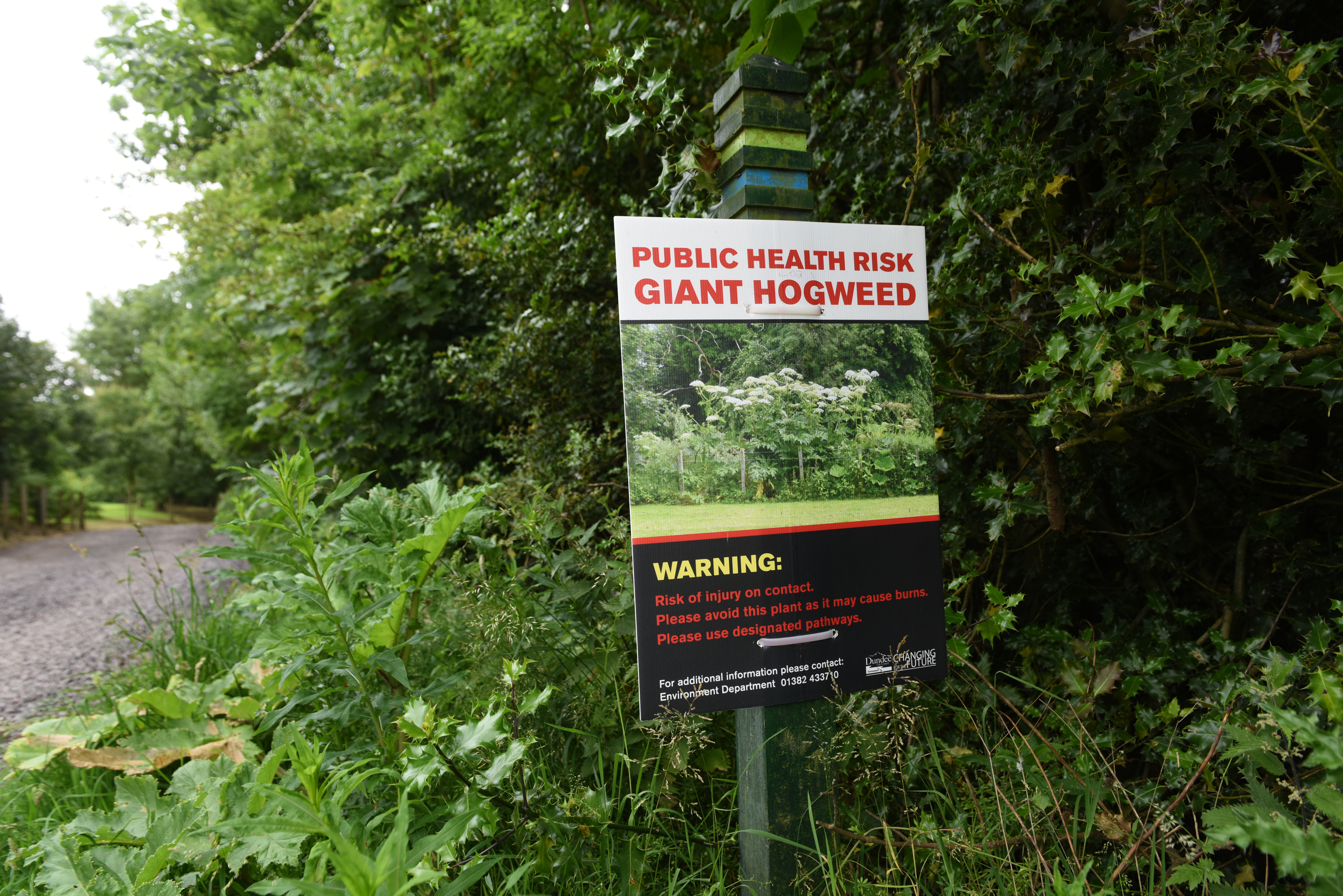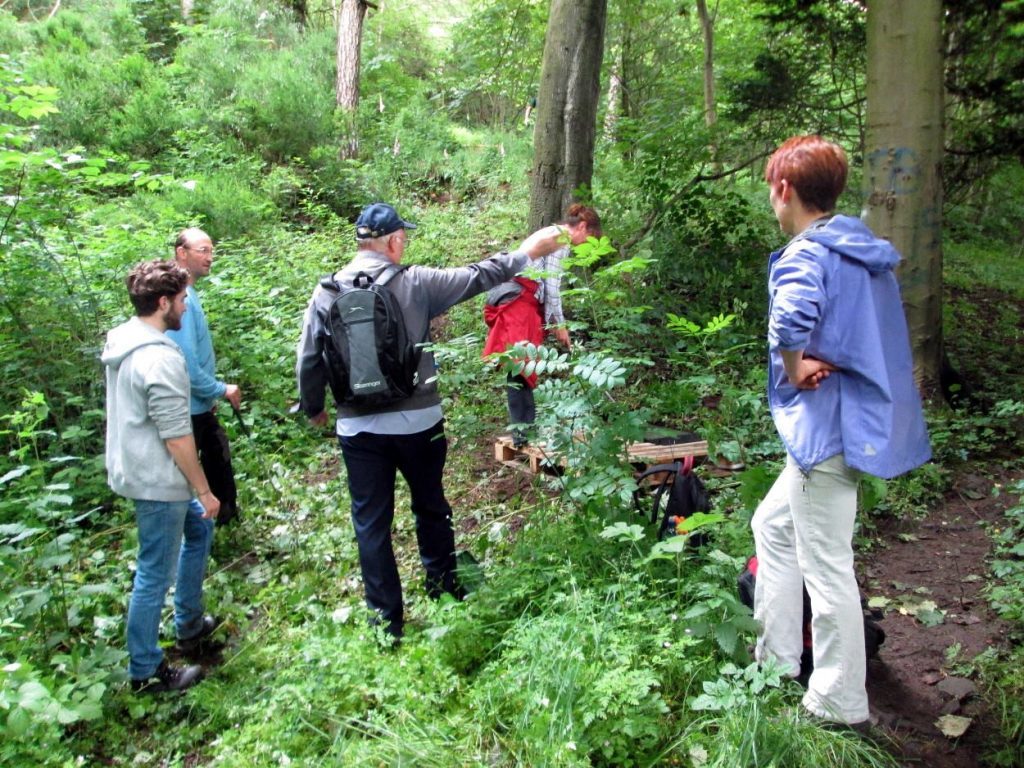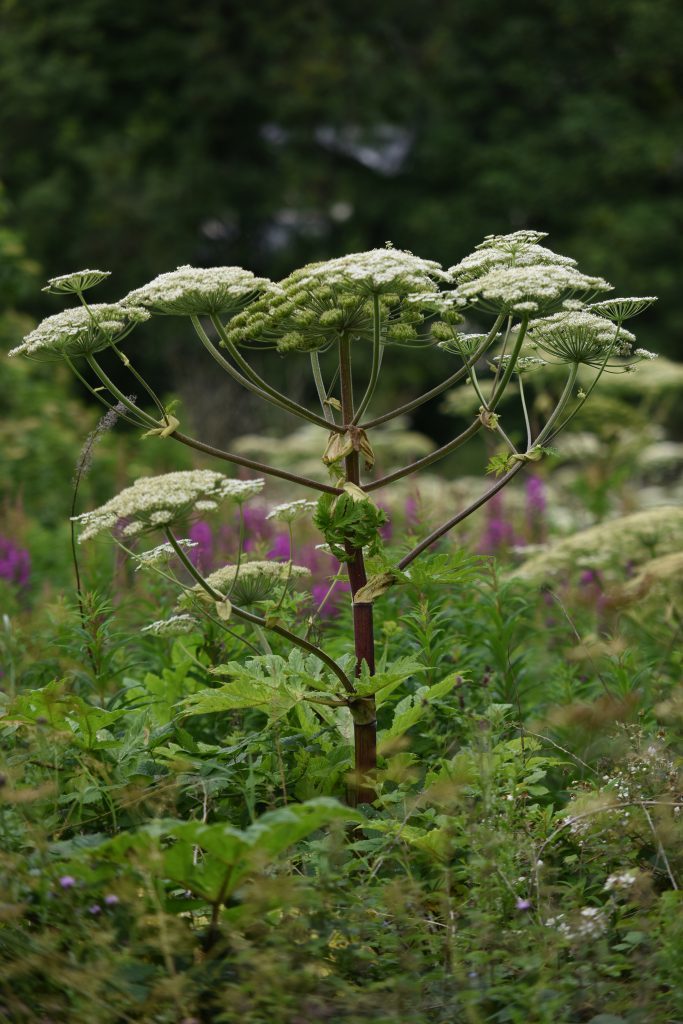A small army of volunteers are being trained in an effort to combat a giant plant that has been terrorising the city of Dundee.
It may sound like the plot of a B-movie straight to DVD horror film, but it only goes to illustrate the council’s dedication to eradicating giant hogweed.
For the past four years there has been a city-wide campaign to tackle the massive invasive species, which can cause blisters and even blindness on contact.
Control measures brought in at the beginning of the project are beginning to see off the plant, but the council has said the “battle” will go on until it is gone.
It retains a stranglehold on the Dighty Burn, affecting the path network and encroaching into adjacent gardens.
As a result, the council believes it is important that the public receive professional training in how to safely remove it.
On Sunday, the next step in the campaign will see volunteers that want to help tackle the menace put through their paces at a training session.
The group will be joined by the convener of Dundee City Council’s neighbourhood services committee, John Alexander.
He said he would be found on the Dighty Burn this weekend in “long trousers, long sleeves and sturdy footwear” to learn how to control giant hogweed without chemicals.
Mr Alexander said: “The council’s teams have already started spraying but getting on top of this dangerous plant is a team effort.
“We’ve been working with Dighty Connect, Dundee conservation volunteers and private landowners to identify where giant hogweed is in our green spaces.
“If any individual plants are particularly hardy or have been missed by the treatment we provide training on the best way to root them out safely.
“Anyone who wants to be a part of Take Pride in Your City campaign can help, by coming along to Sunday’s training session and follow the simple steps to protect themselves from the sap.
“Together we will keep the most vulnerable members of the community safe from this blight and ensure our green spaces can be enjoyed be everyone.”
Giant hogweed is a non-native species that grows to between two and five metres with sap that reacts with light to burn skin and produce painful blisters or if it gets into the eyes temporary or permanent blindness.
It was introduced to Britain more than 100 years ago as an ornamental garden plant and in Dundee is found mostly along the Dighty Burn.
In addition, it has spread along roads, railways, waste land and in some places into gardens, where it poses an obvious threat to pets and children.
Though giant hogweed dies back in the winter, it grows again in the spring and excels at propagating itself, with each flower capable of producing 20,000 seeds.
Anyone interested in taking the training is invited to meet at Melfort Place, Trottick at 10am on Sunday.












